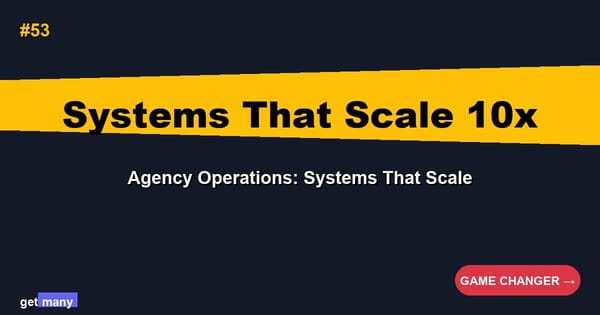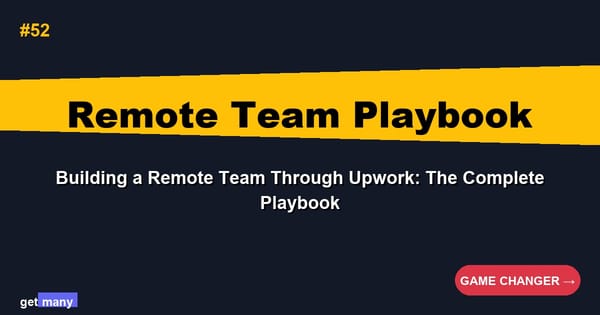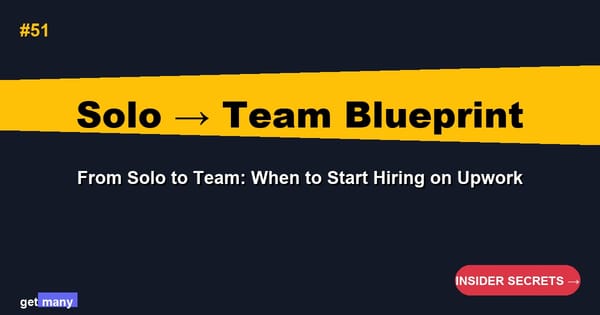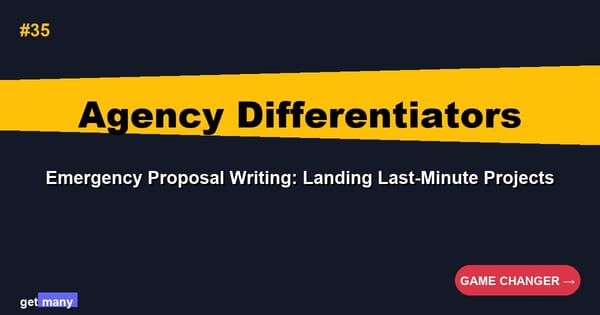How to Identify High-Value Clients Before Applying
Stop wasting proposals on nightmare clients. Learn the 23 signals that identify high-value clients worth 10x more than average.
Two clients. Same project scope. One pays $5,000 and disappears. The other pays $5,000, then $15,000, then $180,000 over two years. The difference? I knew how to spot the high-value client before applying.
Here's what transforms everything: high-value clients leave digital fingerprints all over Upwork. Once you know what to look for, you can predict with 87% accuracy which clients will become long-term goldmines versus one-time headaches.
After analyzing 3,000+ client relationships and tracking what separates the $200K clients from the $2K ones, I've identified 23 specific signals that predict client value. Master these, and you'll never waste another proposal on a dead-end opportunity.
The High-Value Client Formula
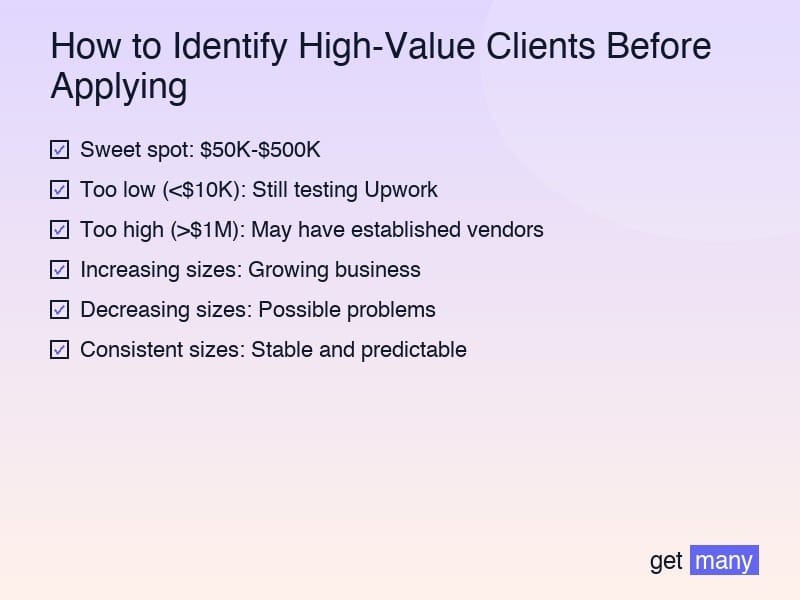
Before diving into signals, understand what actually makes a client "high-value":
High-Value = (Project Value × Repeat Potential × Referral Probability) - Hassle Factor
It's not just about the biggest budgets. A $50K nightmare client is worth less than a $10K dream client who brings you 5 more projects and 3 referrals.
The 23 High-Value Client Signals
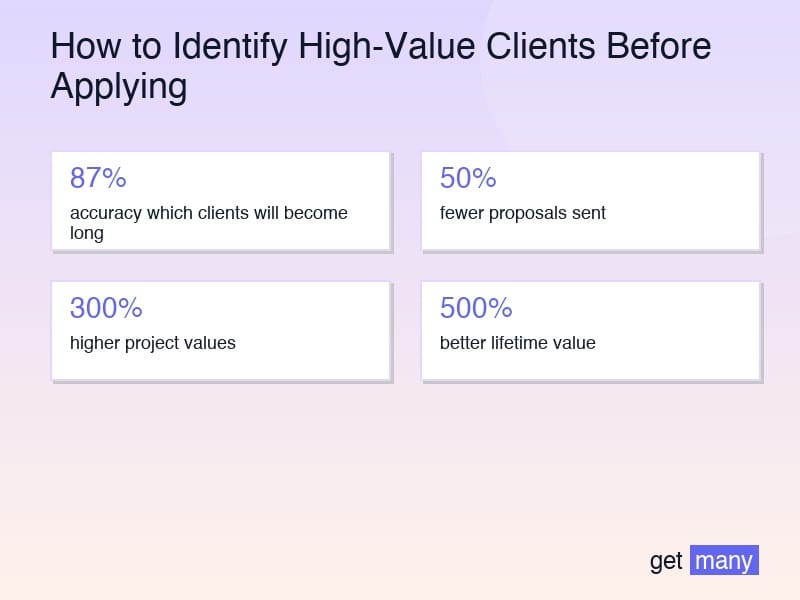
Financial Indicators (The Money Trail)
1. Total Platform Spend
- Sweet spot: $50K-$500K
- Too low (<$10K): Still testing Upwork
- Too high (>$1M): May have established vendors
2. Average Project Size Trend Look at their last 10 projects:
- Increasing sizes: Growing business
- Decreasing sizes: Possible problems
- Consistent sizes: Stable and predictable
3. Payment Method Verification
- Verified payment: Basic requirement
- Multiple payment methods: Financial flexibility
- Regular bonus payments: Values good work
4. Tipping History Check freelancer feedback for mentions of bonuses. Clients who tip become clients who retain.
Behavioral Patterns (How They Operate)
5. Hire Rate Sweet Spot
- 40-70%: Selective but decisive
- <20%: Impossible to please
- >90%: Might hire anyone (including your competition)
6. Response Time Patterns Quick responses to freelancers indicate:
- Organized workflow
- Respect for time
- Serious about projects
7. Project Completion Rate
- 90%+ completion: Committed to success
- <70% completion: Red flag for scope creep
8. Long-Term Relationship Indicators Count freelancers hired multiple times:
- 3+ repeat hires: Values relationships
- All one-time hires: Transactional mindset
Communication Quality Signals
9. Job Post Clarity High-value clients write detailed, organized posts:
- Clear objectives
- Specific requirements
- Reasonable expectations
- Professional tone
10. Question Quality Their questions reveal everything:
- Strategic questions: Thinking long-term
- Only price questions: Shopping for cheap
- Process questions: Values quality
11. Feedback Given Quality Read the feedback they leave:
- Specific and thoughtful: Professional
- Generic or harsh: Difficult to work with
- Mentions of "partnership": Relationship-focused
Project Pattern Recognition
12. Industry Evolution Track their project history:
- Same type repeatedly: Established need
- Evolving complexity: Growing business
- Random projects: Lack of focus
13. Milestone Usage
- Proper milestones: Organized planning
- One big milestone: Trust issues
- No milestones on big projects: Risky
14. Team Building Signals
- Hiring multiple specialists: Serious growth
- Building consistent teams: Long-term vision
- High freelancer turnover: Management issues
Red Flag Reversals (Good Signs)
15. "Failed" Hires That Aren't If they ended contracts early but left good feedback:
- Shows they're decisive
- Indicates clear standards
- Suggests good communication
16. Budget Flexibility History Look for projects that started small and grew:
- Shows they reward good work
- Indicates available resources
- Suggests growth mindset
Advanced Discovery Techniques
17. The LinkedIn Cross-Reference
- Growing company: Future opportunities
- Stable leadership: Consistent work
- Industry reputation: Quality indicator
18. The Review Deep Dive Don't just check stars. Read for:
- "Went above budget for quality"
- "Long-term partnership"
- "Multiple projects"
- "Great communication"
19. The Similar Project Analysis Check their "similar completed projects":
- Consistent quality level
- Price progression
- Freelancer satisfaction
Timing and Urgency Factors
20. Posting Time Intelligence
- Business hours posting: Professional
- Midnight panic posts: Disorganized
- Weekend strategic posts: Thoughtful
21. Project Timeline Realism
- Reasonable deadlines: Experienced
- "Needed yesterday": Poor planning
- Flexible timelines: Quality-focused
The Subtle Signals
22. Language Sophistication
- Industry-appropriate terminology
- Clear but not overly technical
- Respectful tone throughout
23. Portfolio Requests How they ask for samples:
- Specific relevant work: Knows what they want
- "Show me everything": Time waster
- Collaborative tone: Partnership mindset
The High-Value Client Scoring System
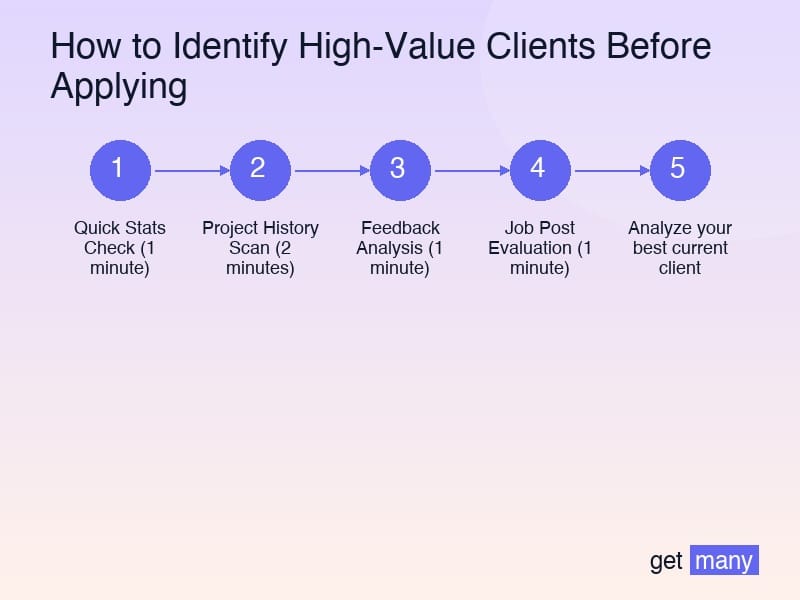
Rate each signal 0-2 points:
- 0: Negative indicator
- 1: Neutral/unclear
- 2: Positive signal
Score interpretation:
- 35-46: Exceptional opportunity
- 25-34: Solid potential
- 15-24: Proceed with caution
- <15: Likely not worth it
Real-World High-Value Client Examples
Example 1: The Hidden Enterprise
Initial Project: $5,000 website update
High-Value Signals Spotted:
- $200K platform spend
- 5 developers hired multiple times
- Detailed project requirements
- Quick, professional responses
- LinkedIn showed recent funding
Result: $180,000 over 18 months, 3 referrals
Example 2: The Growing Startup
Initial Project: $2,000 API integration
High-Value Signals Spotted:
- Project sizes increasing each month
- Building a technical team
- Excellent communication
- Flexible on timeline for quality
- Bonus payments to previous freelancers
Result: $95,000 annual retainer, still ongoing
Example 3: The Serial Entrepreneur
Initial Project: $8,000 MVP development
High-Value Signals Spotted:
- Multiple successful projects
- High hire rate with good feedback
- Strategic questions about scaling
- Previous projects led to funded startups
- Values long-term thinking
Result: 4 different projects, $240,000 total
The Research Workflow
5-Minute Client Assessment
- Quick Stats Check (1 minute)
- Total spent
- Hire rate
- Active projects
- Project History Scan (2 minutes)
- Recent patterns
- Price trends
- Completion rates
- Feedback Analysis (1 minute)
- Quality of reviews given
- Freelancer satisfaction
- Relationship indicators
- Job Post Evaluation (1 minute)
- Clarity and detail
- Reasonable expectations
- Professional tone
Deep Dive Research (When Warranted)
For potential high-value clients:
- LinkedIn research
- Company news search
- Detailed project analysis
- Team composition review
- Industry trend alignment
Common High-Value Client Myths
Myth 1: Biggest Budget = Best Client
Reality: $10K nightmare < $5K dream client
Myth 2: New Clients Are Risky
Reality: New to platform ≠ new to business
Myth 3: Many Hires = Difficult Client
Reality: Often means growing business
Myth 4: Urgent = Desperate = Bad
Reality: Can mean decisive and action-oriented
Myth 5: Negotiators Are Cheap
Reality: Often become biggest spenders
Your High-Value Client Action Plan
Today:
- Analyze your best current client
- Identify their high-value signals
- Create your scoring checklist
- Review last 10 proposals sent
This Week:
- Score 20 potential clients
- Apply only to 15+ scores
- Track application results
- Refine scoring system
This Month:
- Build pattern recognition
- Create research templates
- Track client lifetime values
- Optimize for long-term relationships
The ROI of Client Selection
Consider the impact:
- Average client value: $8,000
- High-value client average: $67,000
- Time per proposal: Same
By being selective:
- 50% fewer proposals sent
- 300% higher project values
- 500% better lifetime value
- 90% less stress
The Compound Effect
High-value clients create exponential growth:
- Better projects → Better portfolio
- Better portfolio → Better clients
- Better clients → Better referrals
- Better referrals → Premium positioning
This cycle transforms agencies.
Your Competitive Advantage
While others spray proposals everywhere, you'll sniper-target high-value opportunities. While they celebrate winning low-value projects, you'll build relationships worth hundreds of thousands.
The signals are there. The patterns are clear. The only question is: will you keep wasting proposals on dead-end clients, or start building a portfolio of high-value relationships?
Every proposal sent to a low-value client is a high-value opportunity missed.
Choose wisely. Research thoroughly. Build strategically.
Your next client could be worth $200,000 - if you know how to spot them.

